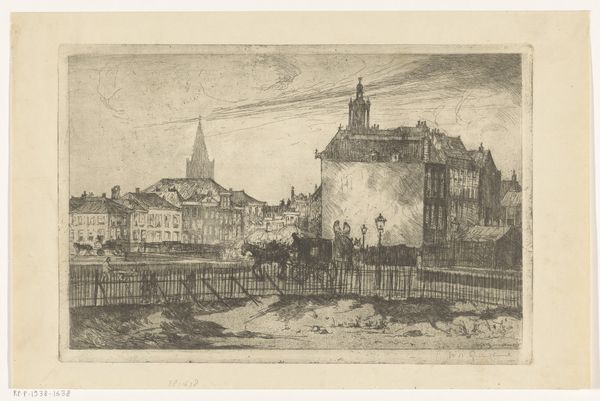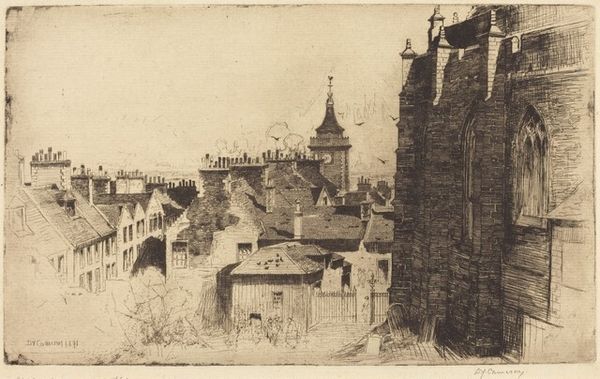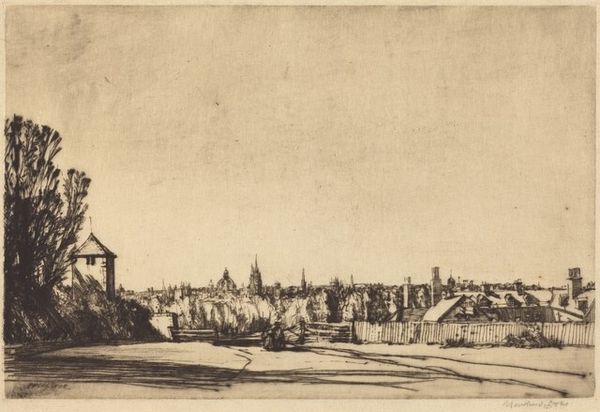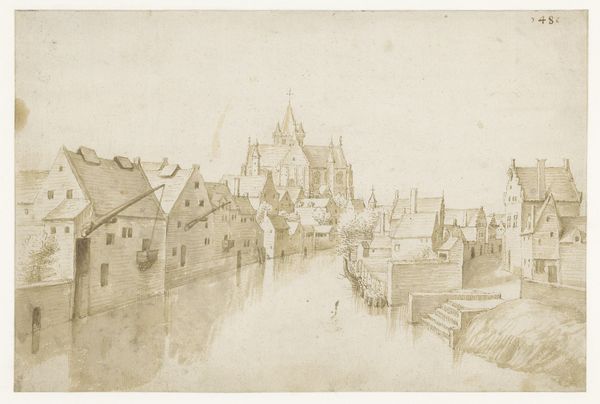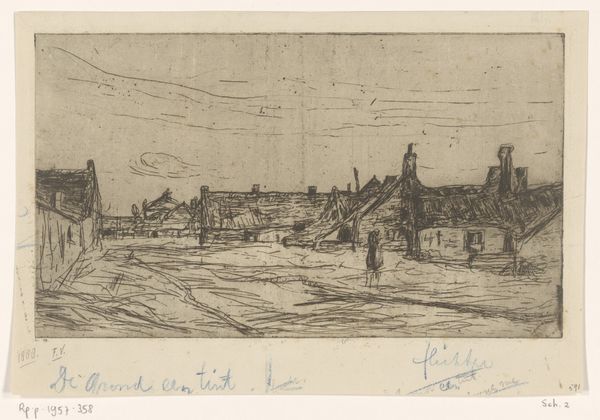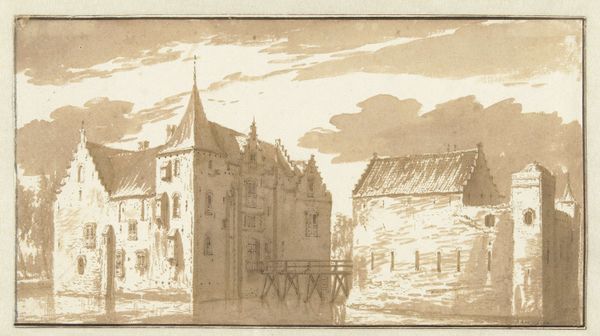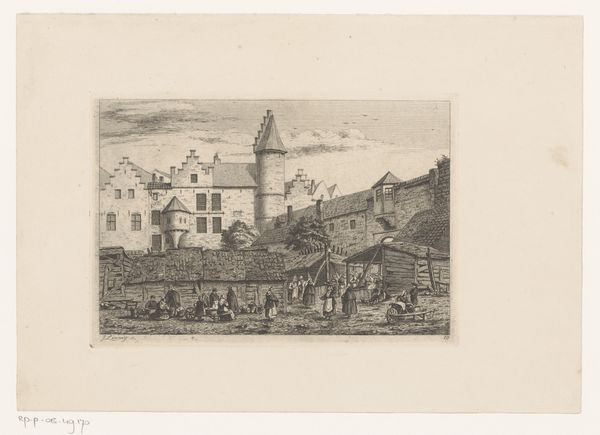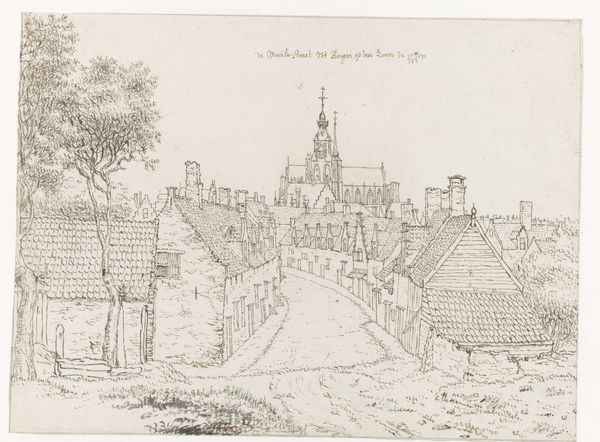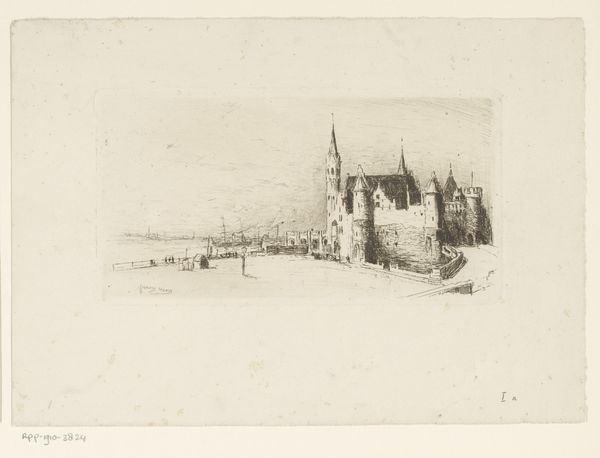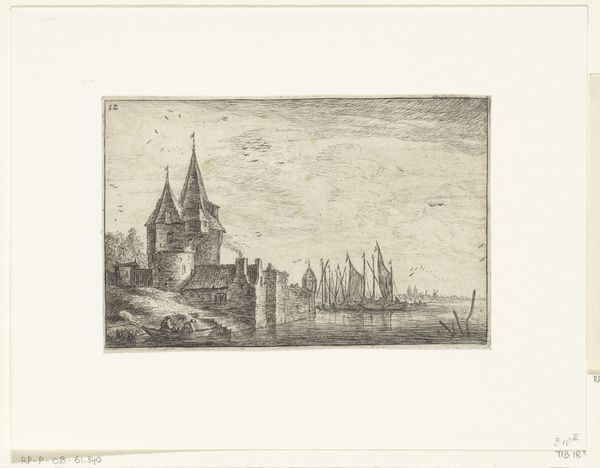
drawing, print, etching
#
drawing
#
ink drawing
# print
#
etching
#
landscape
#
etching
#
cityscape
#
realism
Dimensions: plate: 11.59 × 15.4 cm (4 9/16 × 6 1/16 in.) sheet: 17.78 × 27.94 cm (7 × 11 in.)
Copyright: National Gallery of Art: CC0 1.0
Curator: Well, doesn't that just whisper a story? Platt's 1883 etching, aptly titled "Oxford," has this quiet, dreamy quality. It's as if he's captured not just a place, but a feeling, you know? Like a memory half-faded but still holding onto its beauty. Editor: It strikes me as a very composed image. Note the eye-level vantage point which creates a specific type of perspective of the scene. Beyond being a cityscape rendered in ink, this etching reveals how nineteenth-century urban environments sought artistic representation and, thus, public validation. Curator: Yes! It's fascinating how Platt chose etching. It allows for that incredibly delicate line work. He uses all these layers and it creates such texture, doesn't it? Almost as though you could feel the rough stone, the weathered wood. What do you suppose attracted him to this particular view of Oxford? Editor: Platt belonged to a wave of American artists who, during that period, sought training in Europe. Prints such as this one depicting the Oxford cityscape underscore how, during the late 19th century, old European cities like Oxford came to embody history and learning but also served as symbols of the status that only artistic and cultural experiences could provide to elites. Curator: Exactly! You nailed it; they were drawn to it as an artistic ideal! What I also appreciate is the intimacy in the picture, I love how he found beauty and magic even in what looks like an unassuming street view. Editor: Absolutely. But, was the access to certain streets like this as free and unimpeded as it is rendered in this print? After all, cityscapes often presented utopian ideals, conveying specific types of civic messaging. Curator: That's a great point, it might be less literal documentation and more of an idealized version. Still, the craftsmanship speaks volumes! It feels timeless, in a way. Editor: And to consider it a timeless view makes it all the more telling of the hopes and social projection of the American intellectual class, at the turn of the century. Thanks for the fresh view. Curator: You as well! These prints are full of secrets.
Comments
No comments
Be the first to comment and join the conversation on the ultimate creative platform.

